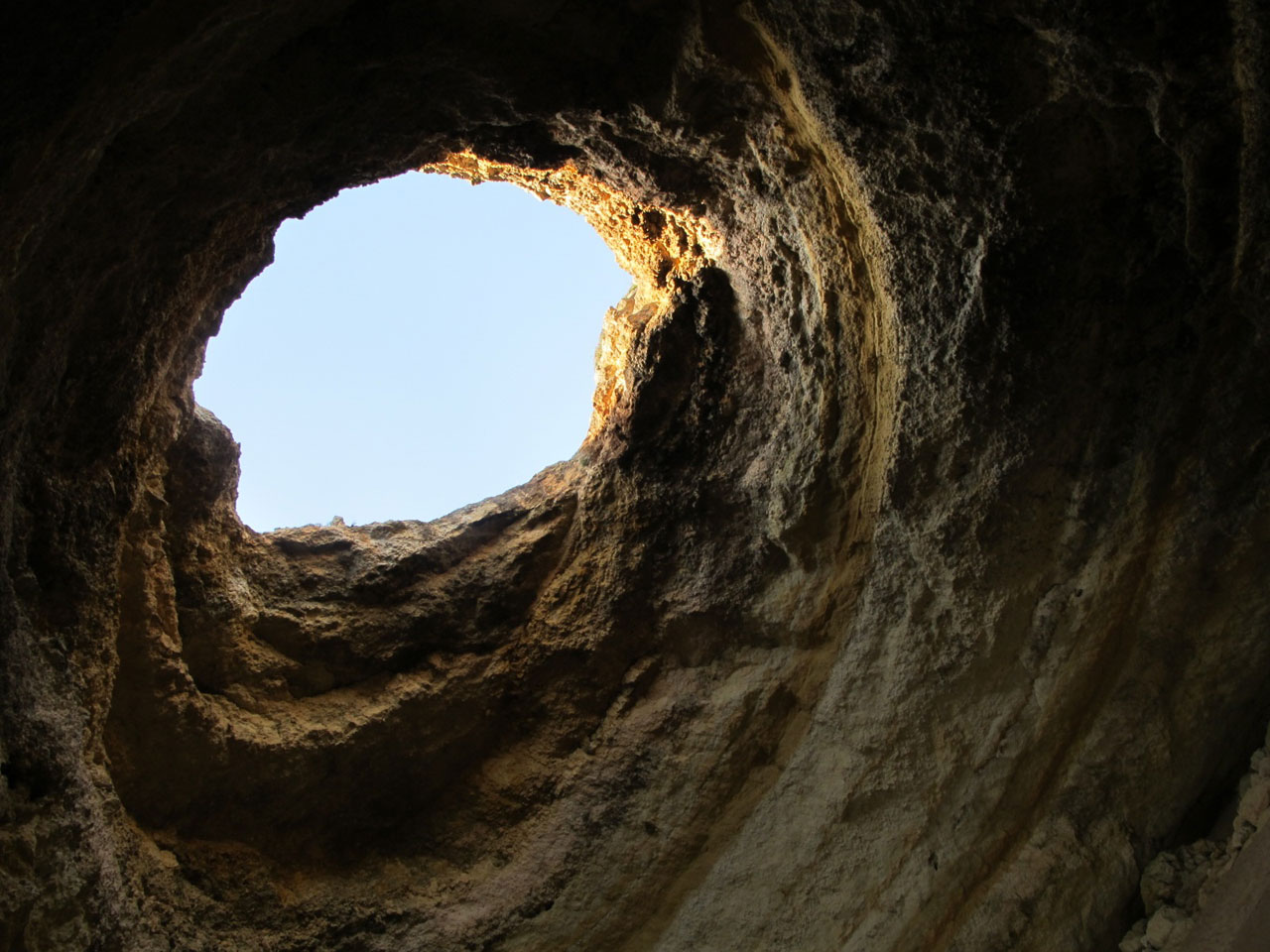Extraordinary Underground Vistas
This article relates to Underland


I am incredibly claustrophobic, so reading Robert Macfarlane's Underland didn't make me particularly inclined to follow in his footsteps. But some readers may be inspired by the places he describes so vividly and want to do a little underland exploring of their own. Many of them are so remote (or dangerous, or illegal) that they'd be inaccessible for all but the most intrepid explorers; but if you do find yourself longing to head below the earth, here are some dramatic and fascinating underground places you can more easily visit:
- The Hundred Mammoths Cave in France:
Near Rouffignac in southwestern France, more than 150 drawings and engravings of mammoths—plus 65 other animals, from horses to rhinos—line the walls and ceilings of this expansive cave system that visitors can access via an electric train. The cave art originates from the Upper Paleolithic era, dating back 50,000 to 10,000 BP.
- Petra in Jordan:
Petra is an entire city boasting stunning examples of 1st century architecture—all within dramatic sandstone cliffs. Many of the Bedouin guides who lead tours of Petra have actually lived there themselves.
- Mesa Verde National Park in Colorado:
Not a cave exactly, but the cliff dwellings inhabited by Anasazi Native Americans in the 13th century still offer a thrill of discovery, as visitors can tour more than 100 rooms and chambers in settlements that also feature plaster paintings of birds and other animals.
- Naples Underground in Italy:
The Italian city of Naples is built on a foundation of compacted volcanic rock called tuff. Over more than 2,000 years, caves and tunnels have been carved out of the rock. Visitors can descend 120 feet under the city to explore the tunnels, catacombs and roads that crisscross under the city.
- Odessa Catacombs in Ukraine:
The tunnels under the city of Odessa were dug in the 17th century and now, at more than 1,500 miles, form the longest underground passageway in the world. Part of the catacombs are viewable at the Museum of Partisan Glory, but the more adventurous can find guides to take them on an unofficial tour of this vast underground network.
- Quincy Mine in Michigan:
Michigan's Upper Peninsula was the epicenter of the United States copper mining industry. Although this mine was closed in the 1940s, today, visitors can travel underground to see first-hand what the life of a miner was like by traveling on the cog railway and heading deep underground to see where and how the ore was mined.
- Cenote Dos Ojos in Mexico:
Mexico's Yucatan Peninsula is home to many cenotes, or freshwater-filled caverns filled with stalactites, stalagmites, and other dramatic underwater rock formations. Trained scuba divers can travel into this otherworldly landscape underwater.
- Mammoth Cave in Kentucky:
The longest cave system in the world is in this National Park. More than 400 miles have been explored and mapped, but there are still many more passages that have yet to be uncovered.
- Werfen Ice Caves in Austria:
The largest known ice cave in the world is reached via some mountain climbing, plus a cable car ride, before reaching the expansive caverns that feature stunning formations in both rock and ice.
Picture of sea cave, courtesy of Public Domain Pictures.
Filed under Nature and the Environment
 This "beyond the book article" relates to Underland. It originally ran in June 2019 and has been updated for the
August 2020 paperback edition.
Go to magazine.
This "beyond the book article" relates to Underland. It originally ran in June 2019 and has been updated for the
August 2020 paperback edition.
Go to magazine.
Membership Advantages
- Reviews
- "Beyond the Book" articles
- Free books to read and review (US only)
- Find books by time period, setting & theme
- Read-alike suggestions by book and author
- Book club discussions
- and much more!
-
Just $60 for 12 months or
$20 for 3 months.
- More about membership!


![]() This "beyond the book article" relates to Underland. It originally ran in June 2019 and has been updated for the
August 2020 paperback edition.
Go to magazine.
This "beyond the book article" relates to Underland. It originally ran in June 2019 and has been updated for the
August 2020 paperback edition.
Go to magazine.